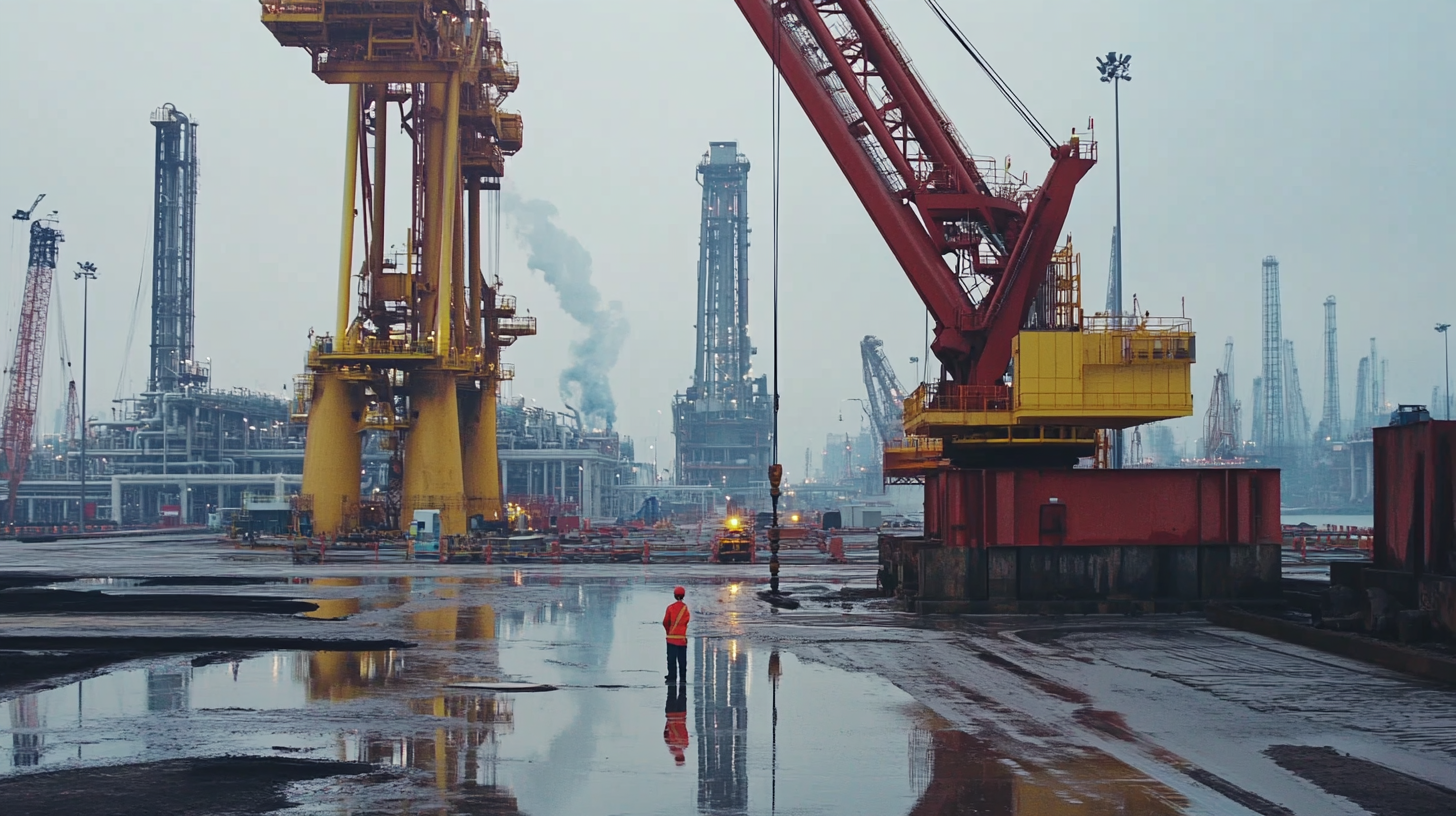Leave Your Message
In the face of escalating tariffs between the U.S. and China, the resilience of Chinese manufacturing within the Basin Market is increasingly impressive. Despite the stringent trade policies that have emerged, recent data indicates that China's manufacturing sector has managed to sustain its growth trajectory, positioning itself "Above Counter Basin." According to a report by the China National Bureau of Statistics, the manufacturing output increased by 6.5% year-over-year in the first quarter of 2023, highlighting the sector's adaptability and strategic innovations. Analysts predict that by 2025, Chinese manufacturing could account for over 30% of the global manufacturing output, underscoring its significance in the evolving market landscape. The ability to rise above the challenges posed by tariffs not only demonstrates the strength of Chinese manufacturers but also signals a shift in global production dynamics, emphasizing the strategic importance of the Basin Market in maintaining competitive edge amid geopolitical tensions.

In today’s volatile global trade environment, Chinese manufacturers demonstrate remarkable adaptability in facing tariff challenges, particularly in the Basin Market. Tariffs imposed by various countries have forced these manufacturers to refine their strategies, optimizing production processes and exploring new supply chains. One prominent adaptation involves diversifying their product lines to cater to shifting market demands, ensuring competitiveness despite added costs. By leveraging technology and automation, they enhance production efficiency, enabling them to maintain lower prices even under tariff pressures.
Moreover, collaboration plays a vital role in the resilience of Chinese manufacturers. Partnerships with local suppliers and international distributors allow for a more agile response to tariff changes. This symbiotic relationship not only mitigates risks associated with fluctuating tariffs but also fosters innovation in product development. Through continuous market analysis and customer feedback integration, these manufacturers can swiftly pivot to meet new regulations while still delivering high-quality products. This agility in operations not only secures their foothold in the Basin Market but also sets a precedent for how companies can thrive amidst economic challenges.
| Country | Tariff Rate (%) | Major Export Goods | Adaptation Strategies | Market Share (%) |
|---|---|---|---|---|
| United States | 25 | Electronics, Textiles | Cost-cutting, Diversification | 30 |
| European Union | 20 | Machinery, Furniture | Innovation, Quality Improvement | 25 |
| Australia | 5 | Food, Electronics | Niche Marketing, Partnerships | 15 |
| Japan | 10 | Automotive Parts, Electronics | Local Sourcing, Supply Chain Optimization | 20 |
| Canada | 15 | Textiles, Machinery | Customization, Enhanced Logistics | 10 |
Chinese manufacturing has continued to flourish despite the challenges posed by tariffs, showcasing its resilience and adaptability in the basin market. Key economic indicators such as export figures, industrial output growth, and rising investments in technology reflect a strong manufacturing sector. In the face of increased tariff pressures from various regions, Chinese manufacturers have strategically pivoted, enhancing their efficiency and diversifying their supply chains to mitigate risks.
Tips for thriving amid tariff challenges include fostering innovation through increased investment in research and development. This approach not only helps manufacturers create higher-quality products but also opens up new markets. Another effective strategy is to strengthen partnerships with logistics providers, ensuring a smooth supply chain that can adjust quickly to market fluctuations. Finally, focusing on sustainability can enhance brand reputation and appeal to eco-conscious consumers, ultimately driving growth in a competitive landscape.
By leveraging these strategies, Chinese manufacturers can maintain their competitive edge, paving the way for continued growth and resilience in a shifting global economy. The data shows that adaptability and strategic planning are essential for navigating the complexities introduced by tariffs.

China's manufacturing sector is increasingly thriving in the face of global tariffs, driven by a robust emphasis on innovation and technology. The nation's capacity to harness vast amounts of data and a growing portfolio of technology patents highlights its competitive edge, although it still faces challenges in catching up with advancements seen in the US and EU. Embracing the concept of "new quality productive forces," China seeks to bolster its industrial framework through localized development strategies that emphasize modernization and enhancement of productivity.
At the heart of this transformation is the integration of advanced digital technologies. The rise of the digital industry showcases how Chinese enterprises are rapidly adopting machine learning and other innovative technologies to propel sustainable growth. This digital transformation is not just about maintaining China’s status as the “World’s Factory”; it represents a paradigm shift towards a knowledge-based economy focused on high-quality industrial output. By prioritizing innovation as the driving force and integrating new technologies into traditional industries, China is positioning itself not merely as a manufacturing hub but as a leader in global production innovation.
Chinese manufacturing has demonstrated remarkable resilience in the face of rising tariffs, particularly in the Basin market. Companies are employing a variety of strategic maneuvers to mitigate the adverse effects of tariffs. According to a report by McKinsey & Company, nearly 80% of surveyed Chinese manufacturers have adapted their supply chains by shifting production to lower-cost countries to avoid tariff repercussions. This strategic shift not only reduces costs but also enhances competitiveness in global markets.
Moreover, many firms are investing in automation and advanced manufacturing technologies to improve efficiency and reduce reliance on labor, which is crucial in maintaining profit margins under tariff pressures. A study conducted by PwC highlighted that firms that embrace Industry 4.0 technologies can increase productivity by up to 30%, showcasing the critical role of technological advancement in mitigating tariff impacts. Additionally, companies are forming strategic partnerships and alliances that allow them to diversify their product lines and expand their market reach, a strategy that enhances overall market resilience in times of elevated trade tensions.

The role of government policies in supporting Chinese manufacturing resilience has been pivotal in allowing the sector to not only withstand external pressures but also to flourish in the Basin Market. In recent years, tariffs imposed by various countries have posed significant challenges to manufacturers. However, the Chinese government has implemented a series of strategic policies designed to cushion these impacts. Subsidies, tax incentives, and investments in technology have been crucial tools that have enabled manufacturers to reduce costs and enhance efficiency.
Moreover, the government’s focus on upgrading the industrial base through initiatives like "Made in China 2025" has encouraged innovation and sustainability within the manufacturing sector. By fostering collaboration between public and private entities, the government has facilitated knowledge transfer and skill development, preparing the workforce for future demands. This proactive approach not only strengthens China’s position in global supply chains but also makes its manufacturing sector more competitive in the face of tariffs and geopolitical tensions. As a result, Chinese manufacturers are not only surviving but thriving, leveraging government support to adapt and evolve in a rapidly changing market landscape.
